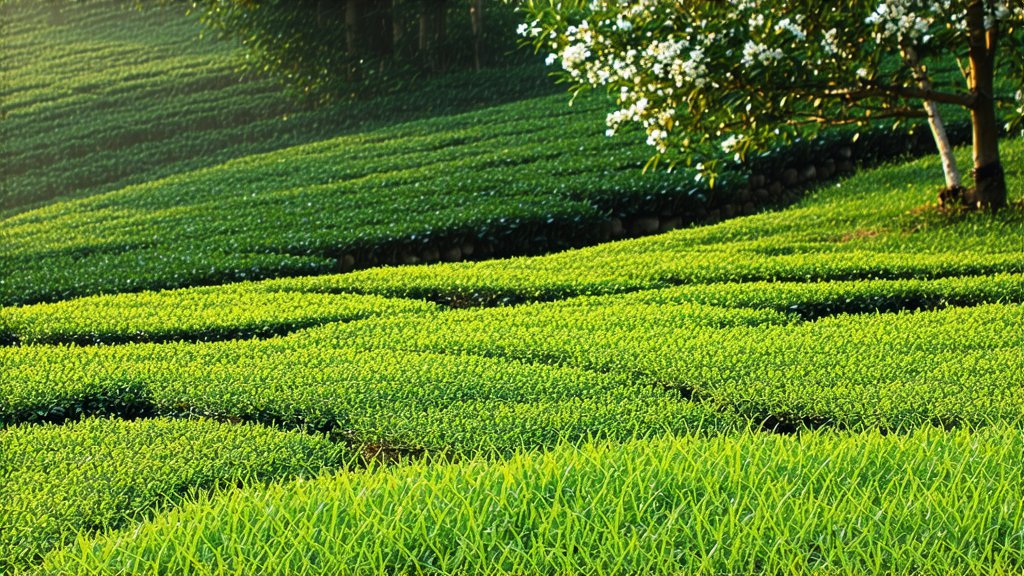
In the vast and diverse landscape of Chinese tea culture, few varieties capture the imagination quite like Bai Mu Dan, or White Peony Tea. This exquisite tea, hailing from the mountainous regions of Fujian Province, stands as a testament to the artistry and tradition that define Chinese tea cultivation and processing. As a distinguished tea culture researcher and tea master, I am delighted to guide you through the history, varieties, production process, and tasting techniques of this enchanting beverage.
Historical Background
The origins of Bai Mu Dan can be traced back to the Tang Dynasty (618–907 AD), a golden age for Chinese tea culture. It was during this period that tea became more than just a beverage; it transformed into an art form and a symbol of sophistication. Bai Mu Dan, meaning "White Peony," derives its name from the delicate, peony-like appearance of its dried leaves and buds. Over centuries, it has evolved into one of the most revered teas in China, cherished for its subtle flavors and numerous health benefits.
Varieties
Bai Mu Dan is primarily produced in the Fuding area of Fujian Province, known for its favorable climate and rich soil, which contribute to the unique qualities of the tea. There are several grades of Bai Mu Dan, differentiated by the proportion of buds to leaves and the fineness of the plucking standard. The highest grades, often referred to as "Silver Needle" due to their almost exclusively bud composition, are the most prized and expensive. Lower grades include more leaves and are generally more affordable but still maintain excellent quality.
Production Process
The journey from leaf to cup for Bai Mu Dan is a labor-intensive process that emphasizes minimal intervention to preserve the tea's natural characteristics. Here's an overview of the traditional steps involved:
-
Plucking: The finest Bai Mu Dan leaves are hand-picked, usually in early spring. Only the top two leaves and a bud are selected, ensuring the highest quality.
-
Withering: The freshly picked leaves are spread out on bamboo mats under shade to wither naturally. This step reduces moisture content and prepares the leaves for further processing.
-
Fixation: The withered leaves are lightly pan-fired or steamed to halt oxidation. This step also helps develop the tea's aroma and flavor profile.
-
Shaping: The leaves are then shaped by hand or using specialized machinery to create their characteristic curled form.
-
Drying: Finally, the shaped leaves undergo a gentle drying process, either in the sun or using low-temperature ovens, to achieve the desired level of dryness.
Tasting Techniques
Tasting Bai Mu Dan is an experience that engages all the senses. Here’s how you can fully appreciate this exquisite tea:
-
Visual Appreciation: Observe the dry leaves for their silvery down and peony-like appearance. When brewed, the liquor should have a pale yellow-green hue, reminiscent of springtime.
-
Aroma: Before taking your first sip, take a moment to inhale the delicate floral notes that rise from the tea. You may detect hints of honey, melon, and fresh hay.
-
Flavor: Sip slowly to savor the complex yet subtle flavors. Bai Mu Dan offers a smooth, silky texture with a slightly sweet aftertaste. Look for nuances of fruitiness and a gentle, lasting finish.
-
Mouthfeel: Pay attention to the tea’s mouthfeel. High-quality Bai Mu Dan should feel velvety and coating on the palate, leaving a pleasantly refreshing sensation.
Health Benefits
Beyond its delightful taste, Bai Mu Dan is celebrated for its numerous health benefits. Rich in antioxidants, it can help combat free radicals and reduce inflammation. Additionally, Bai Mu Dan is reputed to aid in digestion, boost the immune system, and promote relaxation, making it a perfect choice for those seeking both pleasure and wellness in their daily routine.
Conclusion
Bai Mu Dan is more than just a tea; it is a bridge connecting past traditions with contemporary appreciation. Its delicate flavors, intricate production process, and profound cultural significance make it a standout in the world of tea. Whether you are a seasoned tea connoisseur or a curious newcomer, exploring Bai Mu Dan promises a rewarding and enlightening experience. Embrace the tranquility and elegance that this remarkable tea has to offer, and let it transport you to the misty mountains of Fujian Province, where each sip tells a story of centuries-old craftsmanship and enduring beauty.